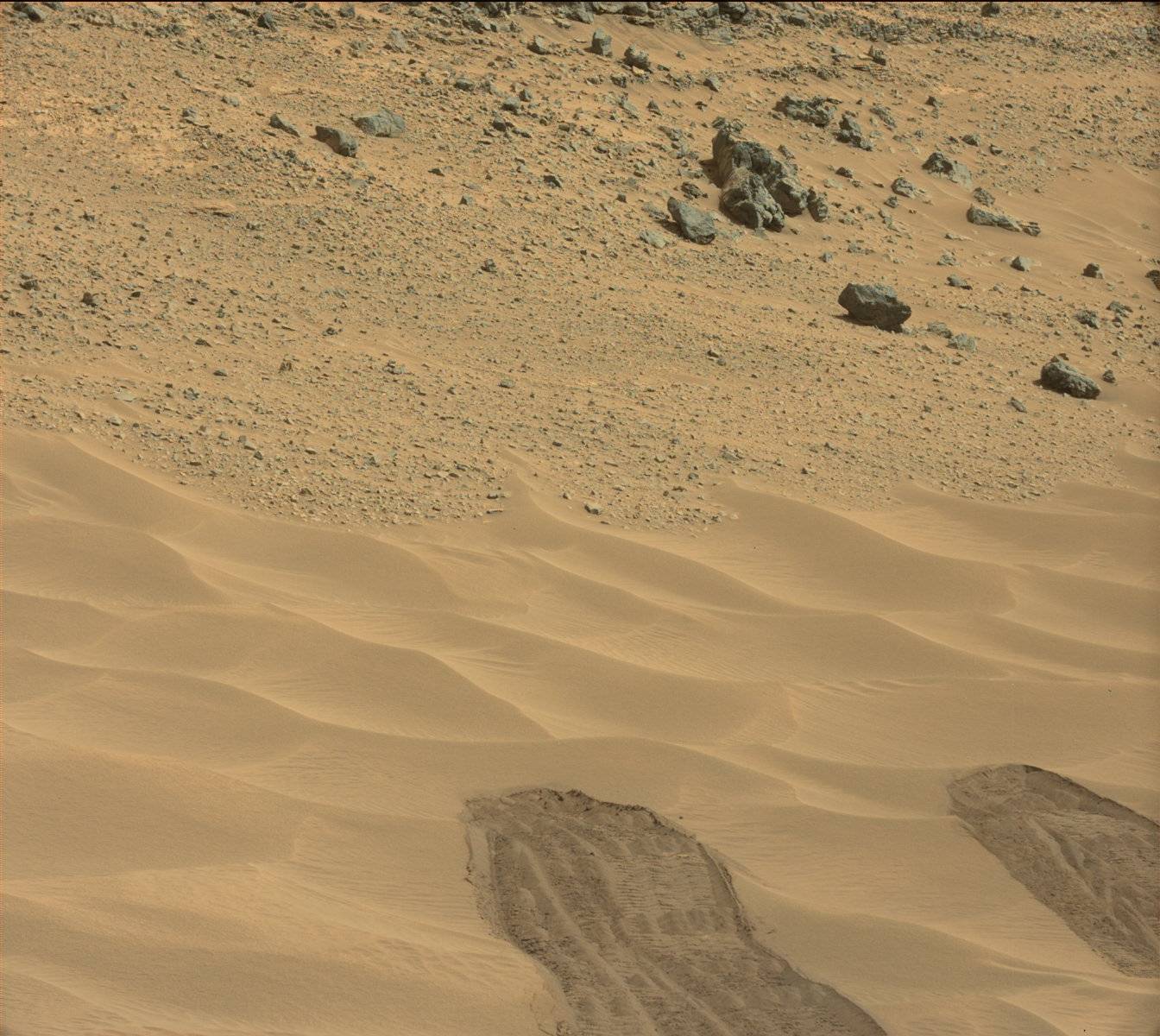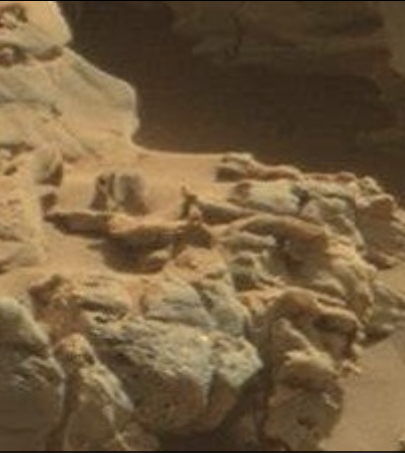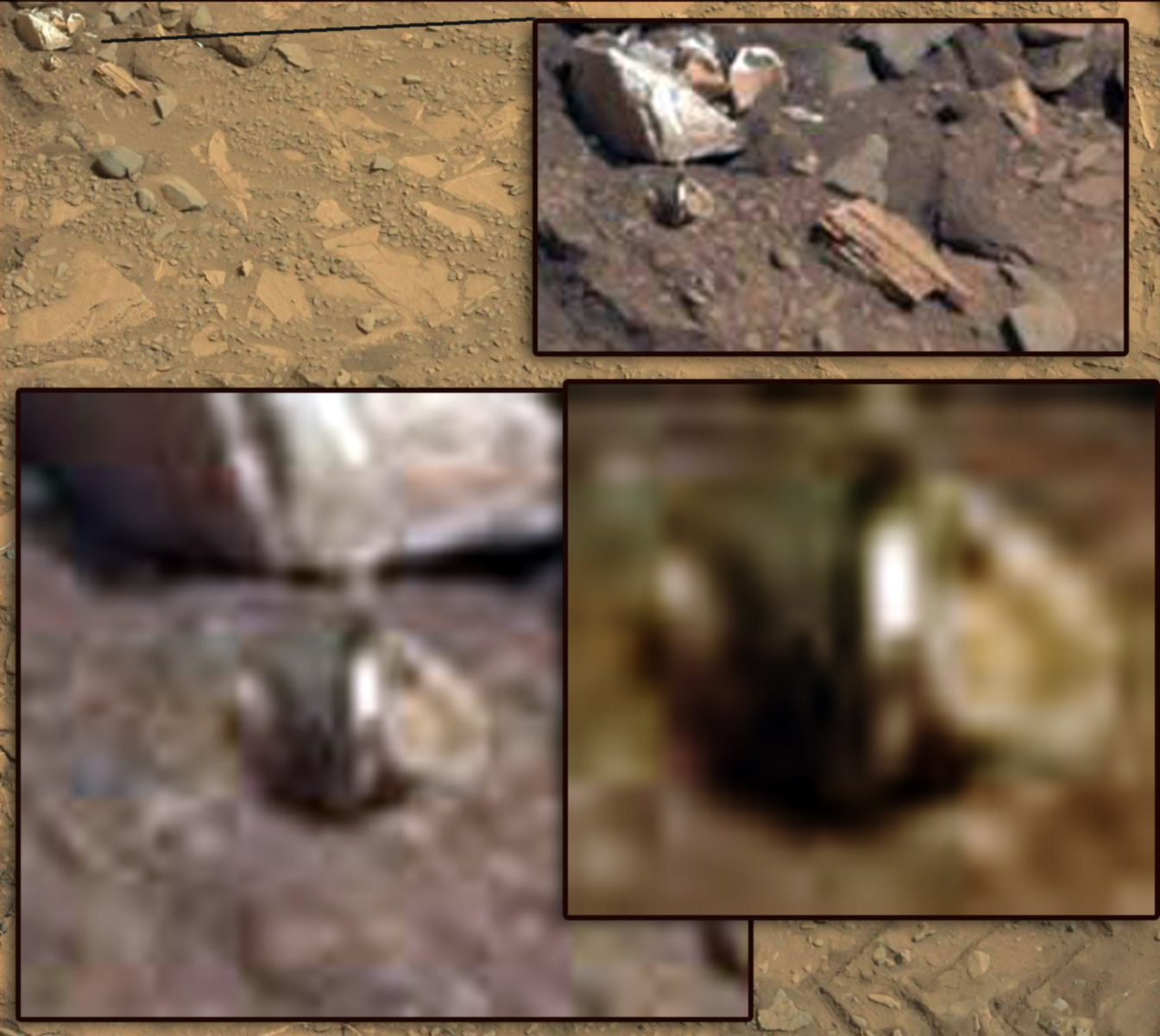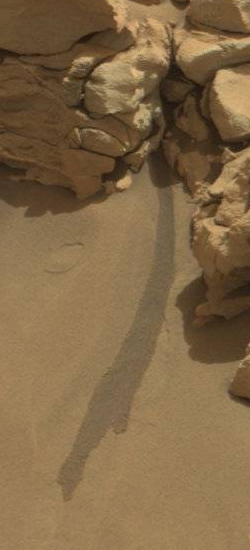It looks like you're using an Ad Blocker.
Please white-list or disable AboveTopSecret.com in your ad-blocking tool.
Thank you.
Some features of ATS will be disabled while you continue to use an ad-blocker.
share:
originally posted by: Blue Shift
originally posted by: funbox
but then lots of pictures ive posted have been given the silence and contempt they deserve
On the other hand, mine are frequently ground-breaking, paradigm-shifting, earth (Mars) shattering in their obvious implications, so much so that the little rover thingy just puts the pedal to the metal and gets the hell out of the area before further, closer investigation blows everybody's mind. We're not ready. We have to work up to it slowly, find little bacteria first, let people get used to the idea. Then later we can spill the beans about the monsters.
mars.jpl.nasa.gov...
Spring water:
THIS is liquid! If you also look in the middle of the picture you can see another spot under the rocks that has flowed and dried. Also to the left of the fresh flow.
This find is worthy of its own thread, not buried here with rocks that resemble things.
a reply to: NOrrTH
Your wish was our earlier command, its own thread, www.abovetopsecret.com... . But like ArMap here, on that thread there seems to be some photo evidence (from the same larger photograph) that it's one in a series of dust flows.
And rocks that resemble things sometimes resemble things enough that they turn out to be things.
Your wish was our earlier command, its own thread, www.abovetopsecret.com... . But like ArMap here, on that thread there seems to be some photo evidence (from the same larger photograph) that it's one in a series of dust flows.
And rocks that resemble things sometimes resemble things enough that they turn out to be things.
edit on 12-8-2014 by Aleister because: (no reason given)
edit on 12-8-2014 by Aleister because: (no reason
given)
edit on 12-8-2014 by Aleister because: (no reason given)
a reply to: ArMaP
by thickness , do you mean flowrate of the water/dust as it gets ushered along by the wind? why is there no spray pattern or gradient to the lighter sand , its a clearly defined edge all the way to its end , certainly have to give the Martian wind full credit for not colouring in over the lines .. but then that's only if you assume its sand moved by wind /airflow
funbox
by thickness , do you mean flowrate of the water/dust as it gets ushered along by the wind? why is there no spray pattern or gradient to the lighter sand , its a clearly defined edge all the way to its end , certainly have to give the Martian wind full credit for not colouring in over the lines .. but then that's only if you assume its sand moved by wind /airflow
funbox
originally posted by: funbox
by thickness , do you mean flowrate of the water/dust as it gets ushered along by the wind?
Not flowrate, the height of the darker layer (or the layer with the darker dust on top), and I don't think wind had any thing to do with it.
why is there no spray pattern or gradient to the lighter sand , its a clearly defined edge all the way to its end ,
One more reason for it not to be liquid, as if the liquid made the dust darker, the edges should appear lighter as we moved from the centre of the flow to it's edges.
certainly have to give the Martian wind full credit for not colouring in over the lines .. but then that's only if you assume its sand moved by wind /airflow
I don't think that wind has any thing to do with it, from all the photos I have seen it makes me think that today's Martian winds are only strong enough to carry the smaller dust particles and were not able of moving those heavier particles on the ground.
a reply to: ArMaP
well from some pictures it looks strong enough to create a wavy ocean of sand

, but asides the wind , a slippage of material ? if this is the case then why is there not a greater amount of material build up at its end ? why has it shaped itself rounded and not rolled in little streaks as gravity pulls it down ... is there some kind of cohesive substance lurking within it composition ? or is it that the sand is darkened wet ? which may also cause slippage
funbox
well from some pictures it looks strong enough to create a wavy ocean of sand

, but asides the wind , a slippage of material ? if this is the case then why is there not a greater amount of material build up at its end ? why has it shaped itself rounded and not rolled in little streaks as gravity pulls it down ... is there some kind of cohesive substance lurking within it composition ? or is it that the sand is darkened wet ? which may also cause slippage
funbox
edit on 12-8-2014 by funbox because: pic
I figure I've lurked in this forum for long enough and finally signed up to post my thanks and encouragement, it's been an adventure following all
of your discoveries - real, imagined or simply posted in good humour. Good luck and good hunting.
I hope we get some follow up on this latest anomaly, some pics from before or after would probably answer a lot of our questions.
I hope we get some follow up on this latest anomaly, some pics from before or after would probably answer a lot of our questions.
a reply to: bu11dog
Good to meet you, and don't think we didn't see you out there, sneakily looking at us from behind that tree trunk. funbox tried to draw you in once with cracker jack and peanut butter, and you almost took the bait (come on, admit it). But now, finally, the real show can start. Welcome!, and it's nice to know that someone else is having fun with this thread.
Good to meet you, and don't think we didn't see you out there, sneakily looking at us from behind that tree trunk. funbox tried to draw you in once with cracker jack and peanut butter, and you almost took the bait (come on, admit it). But now, finally, the real show can start. Welcome!, and it's nice to know that someone else is having fun with this thread.
edit on 12-8-2014 by Aleister because: (no reason given)
edit on 12-8-2014 by Aleister because: (no reason given)
originally posted by: funbox
well from some pictures it looks strong enough to create a wavy ocean of sand
From what I have seen, my theory is that most of the sand movement happened some time ago, as the signs of wind erosion I have seen appear old, making me think that, at least in this area, the winds are not strong enough to move more than the smallest dust particles.
but asides the wind , a slippage of material ? if this is the case then why is there not a greater amount of material build up at its end ? why has it shaped itself rounded and not rolled in little streaks as gravity pulls it down ... is there some kind of cohesive substance lurking within it composition ? or is it that the sand is darkened wet ? which may also cause slippage
I think the darker colour is just the natural colour of the dust when not "baked" by the Sun, so if, for some reason, a small amount of dust rolls downhill it would appear darker than the rest. Also, don't forget that, with particles small enough, dust acts like a liquid, that's how Diesel engines can work with coal dust.
a reply to: ArMaP
know anyone in nasa that swings some punch ? this wont be solved until the drill and laser beams go in , I see what your saying with the dust , but I feel its movement coheres to more than just the noise of gravity.. maybe the 2% water content is shaping/helping it along
or maybe its a little more than two percent .. as if 2% could be a constant anyway, surely certain areas would have environmental attributes to allow larger quantity's to build up . say the lower we go in the creator , the more water is around.. how's that water progress testing chart going ? .. I haven't seen it for a while, unfortunately I don't have the link to check ;l
funbox
know anyone in nasa that swings some punch ? this wont be solved until the drill and laser beams go in , I see what your saying with the dust , but I feel its movement coheres to more than just the noise of gravity.. maybe the 2% water content is shaping/helping it along
or maybe its a little more than two percent .. as if 2% could be a constant anyway, surely certain areas would have environmental attributes to allow larger quantity's to build up . say the lower we go in the creator , the more water is around.. how's that water progress testing chart going ? .. I haven't seen it for a while, unfortunately I don't have the link to check ;l
funbox

can someone with image-enhancing software plz maybe increase the contrast on this one a little bit... in the middle of the image is an odd shape but im thinking its possible to see where the object is located (i.e. behind/on top of the rock) or if its an optical illusion with light and shadow.
a reply to: MacChiavell1
Good find Mac, it's either a carving of a cave man, a cave ape, or a carving of a rock.

To Arken:
Good find, I wonder why the present thing is being called a dust flow (have you ever seen dust flow so neatly and for so long?) but the flows on the thread you posted are called water. Wouldn't the two look alike in some ways?
To funbox:
funbox!
Good find Mac, it's either a carving of a cave man, a cave ape, or a carving of a rock.

To Arken:
Good find, I wonder why the present thing is being called a dust flow (have you ever seen dust flow so neatly and for so long?) but the flows on the thread you posted are called water. Wouldn't the two look alike in some ways?
To funbox:
funbox!
a reply to: Aleister
Im my opinion there is a lot of water underground and water vapor in the air.
If I find the images of the rover (some sols ago) we can see the classic line of the frost evaporated on the top of Curiosity.
I've not much time now. I must go to the beach with my wife.
But hey, we can distinguish the dry sand from the wet one...
To Arken: Good find, I wonder why the present thing is being called a dust flow (have you ever seen dust flow so neatly and for so long?) but the flows on the thread you posted are called water. Wouldn't the two look alike in some ways?
Im my opinion there is a lot of water underground and water vapor in the air.
If I find the images of the rover (some sols ago) we can see the classic line of the frost evaporated on the top of Curiosity.
I've not much time now. I must go to the beach with my wife.
But hey, we can distinguish the dry sand from the wet one...
a reply to: Arken
find anything like this at the beech Arken ? D
odd shiny metallic appearance to it , whatever it is

sol 717 mast
funbox
find anything like this at the beech Arken ? D
odd shiny metallic appearance to it , whatever it is

sol 717 mast
funbox
a reply to: funbox
If I had a rock for every one of those I've found on a beach I could built a stone fort. Nice find. If it wasn't so zoomed in on I'd think that the sea shell that it's part of or existing side-by-side with also came from Arken's Beach.
If I had a rock for every one of those I've found on a beach I could built a stone fort. Nice find. If it wasn't so zoomed in on I'd think that the sea shell that it's part of or existing side-by-side with also came from Arken's Beach.
edit on 14-8-2014 by Aleister because: (no reason given)
a reply to: Arken
Here's a link to your new thread which features a "Crowned Head" on Mars. Hmmmm, I mean, "Yay"? Tis here for the curious, the bored, or the driven:
www.abovetopsecret.com...
Here's a link to your new thread which features a "Crowned Head" on Mars. Hmmmm, I mean, "Yay"? Tis here for the curious, the bored, or the driven:
www.abovetopsecret.com...
new topics
-
Trudeau Resigns! Breaking
Other Current Events: 1 hours ago -
Live updates: Congress meets to certify Trump's presidential election victory
US Political Madness: 2 hours ago -
Gravitic Propulsion--What IF the US and China Really Have it?
General Conspiracies: 2 hours ago -
Greatest thing you ever got, or bought?
General Chit Chat: 2 hours ago
top topics
-
Sorry to disappoint you but...
US Political Madness: 17 hours ago, 17 flags -
Trudeau Resigns! Breaking
Other Current Events: 1 hours ago, 12 flags -
OK this is sad but very strange stuff
Paranormal Studies: 13 hours ago, 9 flags -
Islam And A Book Of Lies
Religion, Faith, And Theology: 14 hours ago, 6 flags -
Live updates: Congress meets to certify Trump's presidential election victory
US Political Madness: 2 hours ago, 6 flags -
Gravitic Propulsion--What IF the US and China Really Have it?
General Conspiracies: 2 hours ago, 4 flags -
Greatest thing you ever got, or bought?
General Chit Chat: 2 hours ago, 3 flags
active topics
-
Trudeau Resigns! Breaking
Other Current Events • 25 • : bluesman023 -
Joe Biden gives the USA's Highest Civilian Honor Award to Hillary Clinton and George Soros.
US Political Madness • 54 • : mysterioustranger -
Greatest thing you ever got, or bought?
General Chit Chat • 9 • : mysterioustranger -
Winter Storm
Fragile Earth • 39 • : Euronymous2625 -
Speaking of Pandemics
General Conspiracies • 10 • : mysterioustranger -
-@TH3WH17ERABB17- -Q- ---TIME TO SHOW THE WORLD--- -Part- --44--
Dissecting Disinformation • 3948 • : Thoughtful3 -
Petition Calling for General Election at 564,016 and rising Fast
Political Issues • 223 • : gortex -
Musk calls on King Charles III to dissolve Parliament over Oldham sex grooming gangs
Mainstream News • 187 • : Oldcarpy2 -
Gravitic Propulsion--What IF the US and China Really Have it?
General Conspiracies • 4 • : Boomer1947 -
Old School Punk
Music • 565 • : underpass61

